30 Things You Must Know Before Buying Canvas Prints
Canvas prints are the most popular choice to preserve and immortalize those precious memories for their endless versatility.
But how do you make sure you are buying the right canvas prints that are going to perfectly translate your photo into wall art?
A complete expert guide to choosing the perfect canvas print for your home, office, or as a personalised gift.
1. Canvas Material Quality Matters More Than You Think
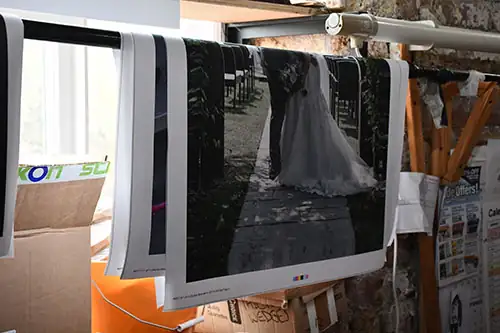
The foundation of any great canvas print is the material itself. High-quality canvases typically use a tighter weave and heavier GSM (grams per square metre).
A higher GSM means the fabric is thicker, more durable, and better at holding rich colour pigment. Cheaper prints often use thin, loosely woven material that can sag, warp, or fade much faster.
When comparing canvas products, check whether the retailer mentions GSM, weave tightness, or fabric type. Reputable companies proudly highlight these details.
A great canvas should feel sturdy in your hands, with a texture that enhances the image without feeling rough or inconsistent. Never overlook material quality; it influences the longevity, vibrancy, and professional finish of your print.
2. Polyester vs Cotton Canvas, Know the Difference
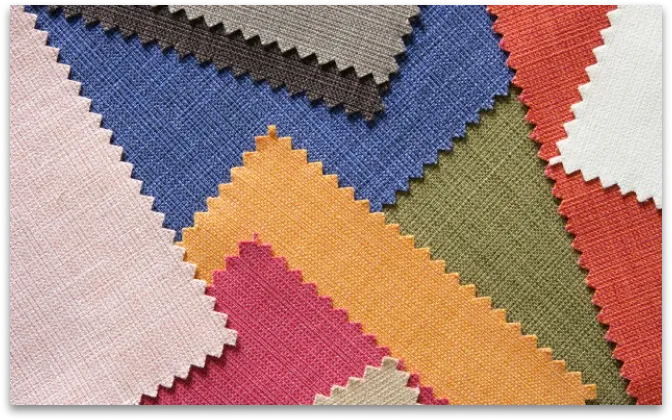
Not all canvas fabrics are the same, and the most common difference lies in the choice between polyester and cotton.
Polyester canvas offers bright, vibrant colours because the surface coating absorbs ink extremely well. It's also more affordable and widely used in modern printing.
Cotton canvas, on the other hand, has a more traditional fine-art appearance thanks to its natural fibre texture. It tends to have a softer, more authentic gallery finish.
While cotton prints can look more organic, polyester is often stronger and more consistent for photo reproduction. Deciding between them depends on the look you want: bold photographic clarity or classic painted texture.
For most customers, polyester strikes the best balance between price and quality.
3. The Frame Wood Should Be Solid and Kiln-Dried

The internal wooden frame (also called stretcher bars) is what keeps your canvas stretched tightly and prevents warping.
High-quality frames are made from solid, kiln-dried pine, which is specifically treated to reduce moisture content. This prevents the wood from twisting or bending over time, a common issue with cheaper MDF or low-grade softwoods.
Kiln-dried pine also provides the strength needed to support large prints without sagging. When buying a canvas, look for mention of kiln-dried timber, FSC certification, or solid pine.
A premium print should never feel flimsy or flexible; the frame should be sturdy, straight, and free from knots. This structural integrity is key to ensuring your canvas hangs perfectly flat on the wall.
4. Thickness of the Frame Influences the Look
The thickness of the frame can significantly affect both the appearance and stability of your canvas.
Standard frames (18–20mm deep) offer a sleek, modern profile and work well in smaller rooms or minimalist interiors.
Thicker “gallery wrap” frames (38mm or more) create a bold, premium look favoured by professional studios and art exhibitions.
They stand off the wall more and give the image a feeling of depth. Beyond aesthetics, thicker frames also provide additional support for larger prints.
When choosing your canvas, consider the space it will hang in and how much visual impact you want. A thicker frame can make even simple photos look high-end and gallery-ready.
5. High-Resolution Images Are Essential

A canvas print will only look as good as the image you supply. Low-resolution or blurry photos often appear pixelated or soft when enlarged. Always upload the highest resolution version available, ideally the original from your phone or digital camera.
Screenshots or compressed images should be avoided because they lose detail. Most modern phones can produce beautiful canvas-quality images if the lighting is good and the original file is used.
If you're unsure whether your image is suitable for a larger print, use a resolution checker tool or ask the printing company for guidance. Starting with a clean, crisp image is the single biggest factor in achieving a stunning final canvas.
6. DPI (Dots Per Inch) Should Not Be Ignored

DPI determines how many dots of ink are printed in one inch of canvas material. A minimum of 150 DPI at the chosen print size is recommended for clear and sharp results, although higher DPI is even better for detailed photos.
If you enlarge a small image too much, the DPI drops, causing visible pixelation or grain. Good printing companies automatically warn you if your DPI is too low based on the size you select.
Always double-check that your image maintains sufficient DPI for the chosen canvas size. DPI alone doesn’t guarantee quality, but too little of it can ruin even the best photo.
7. Lighting in Your Room Changes How a Canvas Looks
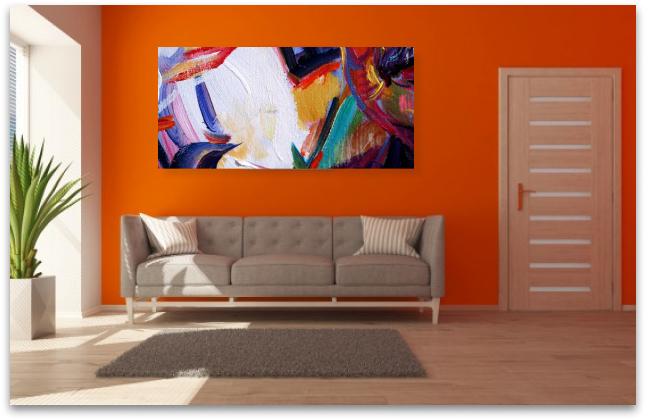
Lighting plays a huge role in how colours appear on your canvas once it's hung.
Warm, yellow-toned lighting tends to enhance reds, oranges, and skin tones, making the canvas appear softer and cosier.
Cool, white lighting brings out blues, greens, and monochromatic styles. Natural daylight also influences brightness and colour perception throughout the day.
Before choosing an image or colour theme, consider the room’s lighting conditions. For example, a sunset print may look warmer under soft lighting, while a minimal black-and-white print may appear crisper under bright LED lights.
Thinking about lighting in advance can help you select a canvas that complements its environment perfectly.
8. Colour Calibration Makes a Huge Difference
Professional printing companies use colour-calibrated monitors to ensure that what they see on-screen matches what will be printed.
Without calibration, colours may appear too dark, washed-out, or inaccurate. This is especially important for portraits, sunsets, or brand colours. If your canvas printer does not calibrate its equipment, your final print may not match your expectations.
Look for companies mentioning colour management, ICC profiles, or professional-grade proofing. If accurate colour is vital to you, for example, wedding photos or corporate prints, choose a company that explicitly states its use of calibrated printing workflows. Proper colour calibration is a sign of a professional and serious canvas manufacturer.
9. Protective Coatings Extend the Life of Your Canvas
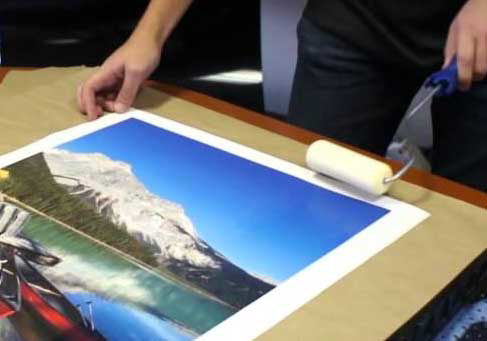
A protective coating (or varnish) helps your canvas resist UV damage, fading, moisture, dust, and everyday wear. Canvases without a protective layer are more likely to fade when exposed to sunlight or develop marks from accidental touches.
A clear matte coating is usually preferred because it keeps glare to a minimum while preserving colour accuracy. It’s especially recommended for canvases placed in bright rooms, kitchens, or children's spaces.
Some companies offer coating as an optional upgrade, while others include it by default. If longevity is important, always choose a coated canvas. The extra protection ensures your print stays vibrant and crisp for many years.
10. Check Return Policies & Satisfaction Guarantees
A canvas print is a personalised product, so it’s important to choose a company with a clear, fair satisfaction guarantee.
Mistakes can happen, colours may appear different, frames may arrive damaged, or images might print incorrectly. A reputable company will offer reprints or refunds for quality issues without making the customer feel at fault.
Before purchasing, review the return policy for terms like “100% satisfaction guarantee” or “free replacement on damaged items.” Companies confident in their quality always provide clear, customer-friendly support. If a website has no refund policy for personalised products, proceed with caution.
11. Not All Printing Technologies Are Equal

Different printing machines produce dramatically different results. High-end canvas printers use giclée printing or 12-colour inkjet systems that offer superior colour depth, smoother gradients, and more realistic skin tones.
Cheaper printers use basic 4-colour systems that lack dynamic range and may produce banding or dull tones. Professional equipment can also handle larger print sizes and maintain consistency across multiple canvases.
When shopping, look for mentions of “giclée,” “archival inks,” “12-colour printing,” or “high-definition reproduction.” These are indicators that the company invests in premium technology. Better printing tech equals better detail, smoother tones, and more professional results.
12. Beware of Over-Compressed Images from Social Media
Images downloaded from apps like Instagram, Facebook, and WhatsApp are automatically compressed to reduce file size. This compression removes fine details and reduces colour accuracy, often resulting in blurry or grainy prints.
Even if the photo looks sharp on your phone, it may not print well at larger sizes. Always upload the original file from your device’s camera roll or request the full-size image from whoever took the photo.
If you must use a social-media image, keep the canvas small. Original, uncompressed files will always produce the best results.
13. Edge Styles Change the Final Design

Canvas prints wrap around the wooden frame, so the edge style you choose affects the overall appearance.
The most popular option is “mirror wrap,” where the edges duplicate the image for a seamless look.
“Gallery wrap” extends the actual image around the sides, but be careful, as important details may spill over the edge.
“Coloured edges” (white, black, or a chosen tone) are ideal if you want a clean, modern frame-style look. Each edge style suits a different type of photo. Landscapes look great with mirror wraps, while portraits often benefit from a coloured edge to avoid cutting off facial details.
14. Consider Where You Will Hang the Canvas
Different rooms require different canvas qualities. For example, kitchens and bathrooms have higher humidity, so a protective coating is essential.
Large living rooms can accommodate oversized or panoramic prints, while hallways benefit from portrait-oriented or narrow canvases.
Children's bedrooms may require extra durability and thicker frames for safety. Consider the viewing distance as well; large prints look best when viewed from several feet away.
Always evaluate the room’s size, lighting, humidity, and décor style before choosing an image. A well-planned canvas placement enhances both the art and the space.
15. Check Production Times, Not Just Delivery Times
Many customers overlook production time when ordering personalised items. Some companies advertise fast delivery, but still take several days to produce the canvas before dispatch. If you need your print quickly, for a birthday, housewarming, or special event, always check both production and delivery speeds.
High-quality canvas makers typically produce within 24–48 hours, while cheaper services may take much longer. If timing is critical, choose a UK manufacturer that prints and ships locally. Transparent turnaround times show professionalism and reliability.
16. Panoramic Photos Need Extra Attention

Panoramic images look stunning on canvas, but they require careful preparation. Because of their unusual aspect ratio, they can lose detail if printed too small or appear stretched if cropped incorrectly. Panoramic prints work best in wide spaces like over sofas or beds.
Always preview how the wrap edges will affect the sides; some photos work beautifully with edge wrapping, while others may need a solid-colour border.
Avoid panoramas with important elements close to the edges, as they may be lost during the wrap. Done properly, panoramic canvases make powerful statement pieces.
17. A Proof or Preview Is Essential
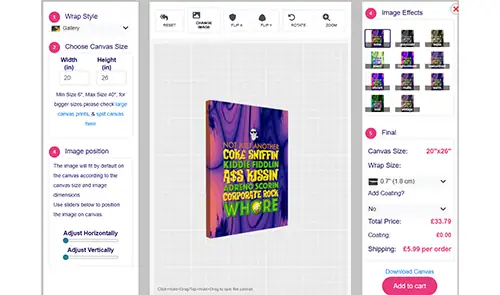
A digital preview allows you to see exactly how your image will look when printed. This includes cropping, orientation, edge style, and the impact of wrap depth.
Companies that do not offer previews leave you guessing, which can lead to disappointment. A high-quality preview system shows whether your image has enough resolution and whether key elements are safely within the visible area.
It also helps you experiment with different layouts before committing. Insist on ordering from a company that offers instant, accurate previews to avoid mistakes and ensure complete satisfaction.
18. Choose the Right Orientation
Choosing the correct orientation (portrait, landscape, or square) is vital to ensuring the canvas fits naturally into the space. Portrait canvases work well for hallways, staircases, and narrow walls.
Landscape canvases suit living rooms, beds, or large sofas. Square canvases are great for modern décor or Instagram-style content. Your photo's composition should also match the orientation; forcing a landscape photo into a portrait canvas usually reduces aesthetic balance.
Before ordering, measure your wall and consider how the canvas will complement the existing room layout.
19. Don’t Crop Important Details Too Close to the Edges
Every canvas has a “wrap area,” where part of the photo extends around the frame's sides. This means about 2–3cm per edge may disappear from the front view.
If your image contains faces, text, or important subjects near the edges, they could inadvertently wrap around the sides and become partially hidden.
Always keep key elements away from the borders and check the preview carefully. If the subject is too close to the edge, choose a mirrored or coloured edge style to protect it. Understanding how cropping works prevents unpleasant surprises.
20. Multi-Panel & Split Canvases Need Carefully Selected Images

Split canvases (triptychs or multi-panel layouts) can create a striking visual effect, but not every image is suitable.
Photos with a single central subject, like a person or animal, often look awkward when divided. Wider, more expansive scenes, such as cityscapes, beaches, or abstract textures, work best because they allow each panel to contribute naturally to the composition.
When ordering a split canvas, ensure the spacing between panels is consistent and that the continuation of the image looks smooth. Always use high-resolution photos, as splitting increases the need for clarity.
21. Texture of the Canvas Affects the Print Style
Canvas texture influences how your final image appears from different viewing distances. Smooth canvases produce sharp photographic detail, ideal for portraits, landscapes, and wedding photos. Textured canvases offer a more painterly feel, softening the image slightly and creating an artistic effect.
The texture can also affect how light reflects off the surface. Some textures diffuse light, which hides minor imperfections, while others enhance contrast.
Consider whether you want a fine-art finish or a photography-grade sharpness. Understanding the canvas texture helps you choose the best style for your photo.
22. Check for Sustainable Materials
Eco-conscious buyers increasingly value responsibly sourced products. Many high-quality canvas manufacturers now offer FSC-certified wood, water-based inks, recyclable packaging, and environmentally friendly production methods.
Eco-friendly printing also produces cleaner, more stable colours without harmful chemicals. Choosing a company that prioritises sustainability means supporting ethical manufacturing and reducing your environmental impact.
Companies using responsible materials typically mention it clearly in their product descriptions. If eco-credentials matter to you, look for terms like “recycled packaging,” “eco inks,” “FSC timber,” and “sustainable manufacturing.”
23. Hanging Kits Make Your Life Easier
A quality canvas should come ready to hang, ideally with a free hardware kit included. Hanging kits typically contain sawtooth hangers, D-rings, picture wire, or brackets, depending on the frame thickness. Having a reliable hanging kit saves you time and ensures your canvas stays securely on the wall.
Cheap canvases often omit hanging hardware or use weak fixtures that can fail over time. Always check what’s included in your order, a complete kit shows that the company cares about user experience and long-term usability.
24. Large Prints Require Stronger Frames
Bigger canvases (especially above 30” in width) exert more tension and weight on the frame.
To prevent sagging or bowing, high-quality providers reinforce larger frames with additional support bars or cross-braces. Without internal bracing, large prints may warp or loosen over time.
When ordering a large canvas, always check whether extra support is included. A well-built frame ensures the canvas stays tight, flat, and perfectly aligned on your wall for years. This level of construction is especially important for panoramic or multi-panel displays.
25. Oversaturated Colours on Screen Print Duller in Reality
Modern phone screens use high-brightness displays that make colours appear more vibrant than they truly are. Neon tones, extreme highlights, and boosted saturation often print less intensely on canvas because ink cannot replicate LED backlighting.
If your photo is extremely vibrant, expect a slightly more natural look in the final print. This is not a flaw; it’s just how physical printing works. If colour accuracy is important, request colour correction or calibration. Professional printers can adjust your image for the best possible print outcome while maintaining realism.
26. Black & White Images Need High-Quality Greyscale Printing
Black and white photos are elegant and timeless, but they require excellent printing equipment to avoid colour casts. Cheap printers may introduce unwanted blue, green, or magenta tones, especially in the shadows.
High-quality greyscale printing uses multiple black and grey ink channels to achieve smooth gradients and rich contrast. If you're printing a monochrome image, choose a company that specialises in fine-art printing or mentions greyscale capabilities.
A properly printed black-and-white canvas delivers dramatic depth and museum-grade aesthetic appeal.
27. Collage Canvases Work Best with Clean Layouts

Collage canvases allow you to combine multiple photos into a single artwork, perfect for family memories, travel highlights, or special events.
However, overcrowding the layout can make the print feel messy or unfocused. Limiting yourself to 3 ~ 6 images per canvas usually creates a cleaner, more balanced result unless you're printing a very large size.
Ensure all photos have similar lighting, orientation, and colour tones for visual harmony. A well-executed collage should feel curated, not chaotic.
28. Room Style Should Match the Canvas Aesthetic
The style of your room should influence the type of canvas you choose. For example, modern homes with neutral palettes benefit from minimalist photography or black-and-white images.
Rustic interiors pair well with warm tones, nature scenes, or textured canvas materials. Kids’ rooms look great with colourful, playful artwork or bold graphic prints.
Consider your furniture, wall colours, and room atmosphere when selecting an image. A canvas should complement the décor, not clash with it. The right match enhances the space and makes the artwork feel intentional.
29. Measure Your Wall Properly
One of the most common mistakes when ordering a canvas is misjudging the size. Photos often feel larger on screen than they do on a wall.
To avoid disappointment, use masking tape to outline the canvas dimensions exactly where you plan to hang it. Step back and view it from different angles and distances.
This gives you a realistic sense of scale. For large walls, don’t be afraid to go big; medium canvases can look lost in spacious rooms. Measuring carefully ensures your canvas makes the right impact.
30. Choose a Trusted UK Printing Service
Local UK print providers offer several advantages over overseas factories. You’ll enjoy faster production times, quicker delivery, easier returns, and more reliable customer service.
UK-based manufacturers also tend to provide better quality control because everything is produced and checked in-house. Look for companies with strong reviews, clear product descriptions, and detailed quality information.
A trustworthy UK printer ensures you get a beautiful, durable canvas that meets your expectations. Supporting local production also reduces shipping impact and helps sustain British businesses.
